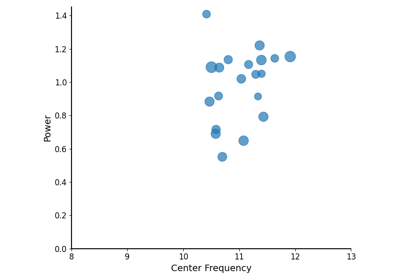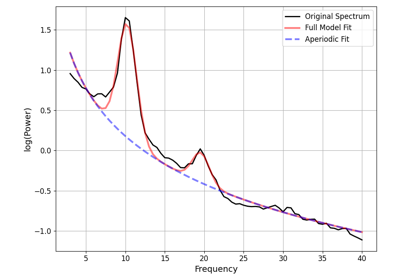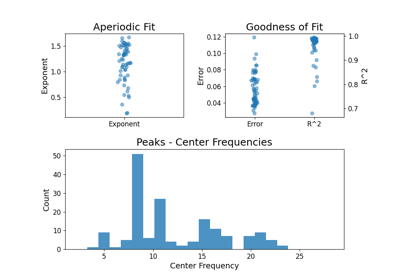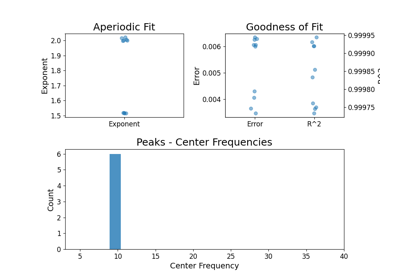fooof.analysis.get_band_peak_fg¶
- fooof.analysis.get_band_peak_fg(fg, band, threshold=None, thresh_param='PW', attribute='peak_params')[source]¶
Extract peaks from a band of interest from a FOOOFGroup object.
- Parameters:
- fgFOOOFGroup
Object to extract peak data from.
- bandtuple of (float, float)
Frequency range for the band of interest. Defined as: (lower_frequency_bound, upper_frequency_bound).
- thresholdfloat, optional
A minimum threshold value to apply.
- thresh_param{‘PW’, ‘BW’}
Which parameter to threshold on. ‘PW’ is power and ‘BW’ is bandwidth.
- attribute{‘peak_params’, ‘gaussian_params’}
Which attribute of peak data to extract data from.
- Returns:
- 2d array
Peak data. Each row is a peak, as [CF, PW, BW]. Each row represents an individual model from the input object.
Notes
The returned array keeps track of which model each extracted peak comes from, returning a [n_models, 3] array, with one peak returned per model.
To do so, this function necessarily extracts and returns one peak per model fit.
Each row reflects an individual model fit, in order, filled with nan if no peak was present.
If, instead, you wish to extract all peaks within a band, per model fit, you can do something like:
>>> peaks = np.empty((0, 3)) >>> for f_res in fg: ... peaks = np.vstack((peaks, get_band_peak(f_res.peak_params, band, select_highest=False)))
Examples
Extract alpha peaks from a FOOOFGroup object ‘fg’ that already has model results:
>>> alphas = get_band_peak_fg(fg, [7, 14])
Extract peaks from a FOOOFGroup object ‘fg’, selecting those above a power threshold:
>>> betas = get_band_peak_fg(fg, [13, 30], threshold=0.1)



